Carl Byoir & Assocs., third largest PR firm that vanished in the maw of WPP, was not the only casualty of a new ad industry-dominated culture. Nine PR media and 16 New York PR groups bit the dust.
The high-spirited culture of Byoir, staffed by many ex-journalists who delighted in helping reporters, was replaced by an information-stingy ad culture.
Not only did PR media and PR groups disappear, but so did ordinary civility, replaced by a harsh, “all business” and “bottom line” culture. Unreturned reporter phone calls and emails became standard corporate, agency and PR association practice.
|
Ad conglomberate spending in PR Week/U.S. from Nov. '04 to Sep. '05 (click to enlarge) |
|
|
Nine PR media stopped publishing, some of them continuing to carry news on their websites. The ad conglomerates pursued a policy of giving almost all their ads to PR Week/U.S., which had been founded in 1998 by Haymarket, major U.K. publisher. In the 10-month period from November 2004 to September 2005, the O'Dwyer magazine got one ad from a conglomerate-owned PR firm while 44 pages worth $307,120 were placed in PRW/U.S. by conglomerate units.
PRSA CEO Ray Gaulke and 1995 president John Beardsley had gone twice to London to urge Haymarket to publish PR Week/U.S., promising use of the 19,000 membership list of PRSA for initial circulation. Gaulke, in a letter, urged PRSA's advertisers to advertise in PRW and its members to subscribe.
Steve Pisinski, 2000 PRSA president, condemned the help given to PRW/U.S. as a violation of PRSA’s required neutrality to media. Pisinski, angered at what he said was misleading PRSA financial statements, started booking PRSA dues over a 12-month period instead of booking them as cash, which had greatly increased the “net assets” of the Society.
He was able to boost the deferred dues account from $198,746 to $813,116 in 2000, cutting net assets. The auditor that accepted the revised figure, Deloitte & Touche, one of “Big Four” CPA firms (244,000 employees) was fired the next year, replaced by Sobel & Co., Livingston, N.J. The DD quickly headed down again to the low six figures.
U.S. a “Rude Society”
PR veteran Rene Henry, author of ten books, wrote one on the decline of civility called Customer Service: the Cornerstone of Success. He was especially hard on those who don't return phone calls or emails. They are "rude, inconsiderate and breaching all aspects of good, old-fashioned courtesy," he wrote. They should be "censured and possibly terminated." Henry returned all calls and emails within 24 hours including those by vendors "because it was the polite and professional thing to do." Such politeness paid off in business tips.
“The U.S. is becoming a rude society,” he wrote. “Fewer people care about or expect good customer service. Too many companies are living on past reputations. A new generation of senior executives has no idea what customer service is all about. I attribute this to a society of people who constantly thumb their pods, pads and berries and are oblivious to the world around them.”
Chapters cover basics such as listening, responding, telephone etiquette, and the problem of gate guardians. Programs praised include those of Amazon, Amica Mutual Insurance Co., Marriott and Crystal Cruise Lines.
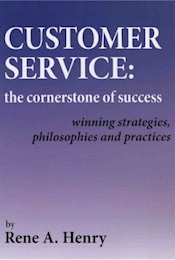 |
O’Dwyer’s Modern History of PR, a book that will cover the dramatic changes in PR over the past 50 years, will show that the happy, considerate and polite Byoir culture was by no means unique.
Numerous PR firms and corporate PR depts. had enthusiastic relationships with reporters and reporter groups including H&K, Edelman, Manning, Selvage & Lee, Doremus, Rowland Co., Creamer Dickson Basford, Rockey Co., to name some.
Corporate Events Listed
The July 1989 O’Dwyer’s magazine catalogued some of the numerous annual events of the blue chips including:
• Mobil’s “Summer Garden Party” for the press at the Museum of Modern Art, New York.
• Annual “Press Dinner” of Standard Oil Co. at the St. Regis Hotel Roof, New York.
• ITT Annual Brussels Boys’ Club Dinner at the St. Regis Roof plus annual picnics in Nutley, N.J., for 200+ reporters and their families.
• American Stock Exchange golf outing and dinner for reporters at the Westchester Country Club.
• American Can Co. annual holiday party for press at the Four Seasons restaurant.
• Ethyl Corp. year-end press lunch at the Plaza Hotel or Chemists Club, New York.
• RCA Corp. hosting reporters at distance places including Puerto Rico as part of product introductions. One such event was a weekend at Gurney’s Inn, Montauk, that included a golf outing. RCA threw the biggest party at the New York Financial Writers’ Follies each year.
• Texaco each year took a bus load of reporters to the Army-Navy game in Philadelphia, treating them to dinner in New York at day’s end.
• General Motors, Ford and Chrysler had year-end press parties at the Detroit Press Club.
• W.R. Grace & Co. had an annual St. Patrick’s Day party in New York for more than 100 reporters and spouses. Peter Grace often attended. Hoechst Celanese each year hosted more than 100 fashion and trade press at its East Side New York townhouse.
PR Firms Embraced Press
Manning, Selvage & Lee, Doremus & Co. and Carlson, Rockey & Assocs., had annual golf outings for reporters. Many ad agencies invited press to holiday parties. Kenyon & Eckhardt and West, Weir & Bartel hosted dinners at their offices, explaining the different departments to reporters and their spouses.
George Whipple, PR head at Benson & Bowles, took press and an agency execs to lunches and urged reporters to call up the execs at any time without going through him. Whipple hosted nearly 100 press and PR people for dinner at his home in Carmel, N.Y., one Saturday night.
Trade groups such as the Ad Club of New York, Ad Women of New York, and PR Society of America invited press to their annual banquets.
PRSA not only invited press to its Silver Anvil Awards banquet but included reporters as judges. This writer was an Anvil judge three times in the 1970s.
16 PR Groups, PRSA/NY Lunches Vanish
• Shop Talk, made up of two top executives from a dozen of the biggest PR firms, had monthly dinner meetings at the Sky Club atop what is now the Met Life building to discuss such topics as wages paid, insurance plans offered to employees, and employee benefits in general. Anti-trust considerations may have spelled its doom once this group was outed.
• Pride & Alarm, so-named because PR people often "view with pride or point with alarm," was a group of about 30 that in 1964 came up with the concept of accreditation that was later adopted by the PR Society. Members included Richard Aszling; Alan Bell, Bell & Stanton; Harold Burson, Burson-Marsteller; Bill Cook, U.S. Steel; Bill Durbin, H&K; James Fox; Bill Gaskill, T.J. Ross; Bill Lydgate, Earl Newsom; Edward Pendray; Ward Stevenson, Citibank, and Sally Woodward, Flanley & Woodward.
• The Chemical Communications Assn. whose members were 60 corporate, agency people and editors in the chemical industry. They lunched on the second Tuesday of the month at the Williams Club, 24 E. 39th st. Dues were $20 a year.
• The Financial Relations Society consisted of 50 corporate PR pros who had dinner meetings on the second Monday at the Princeton Club and various restaurants. Dues were $60.
• Hospital PR Society of Greater New York had 80 members and met at lunch or dinner. Dues were $25. Contact was Grace Kraskin of Beth Israel Medical Center.
• The Monday II Group was 20 New York corporate PR people who represented companies based outside of New York. Lunches at the Sky Club and other restaurants were held on the second Monday. There were no dues.
• National PR Council of Health and Welfare Services was a national group of 2,000 PR and fundraising executives of nonprofits based in New York at 820 Second ave. It was absorbed by PRSA in the late 1970s.
• New York Airline PR Assn. that had 58 members who worked for airlines serving New York. The group became the North American Airlines PR Assn. and had monthly meetings until 2008 when it made its final landing. A member said that with airline h.q. flying outside New York and declining funds available to PR, the group has become inactive. Hope remains for a rebirth.
• New York Business Communicators had 175 members who met monthly at different places. Dues were $55 yearly. Contact was Bill Nicolai at American Standard. Anyone in “business communications” could join.
• Paper Industry PR Group had monthly luncheons. Members included St. Regis Paper, Boise Cascade, Mead Westvaco, etc.
• PR Roundtable was about 50 PR pros who handed house PR for PR firms or ad agencies. It had monthly lunches for many years at which media figures such as “Johnny Apple” of the New York Times would speak. It also hosted a major holiday party each year for members and the press. The job of handling “house PR” for a PR firm or ad agency has almost entirely vanished.
• Wall Street Irregulars had monthly lunches and an annual golf outing. Its more than 40 members, including financial press, met at moderately-priced restaurants. James Catalano, formerly of Hill & Knowlton and then with Marine Midland Bank, ran the group.
• Wednesday PR Group was about 25 solo practitioners or owners of small PR firms who met once a month for lunch at the Williams Club to discuss problems and opportunities facing small firms. Herb Corbin of KCS&A was a leader.
• Women Executives in PR merged in 2006 in its 50th year with Advertising Women of New York. Founded by Denny Griswold who also founded PR News with her husband, Glenn Griswold, WEPR had 75 members in 1975.
• The Texas PR Assn., nearly 50 years old, dissolved Dec. 31, 2011. Larry Meltzer of MM2 PR, Dallas, president, said membership had been in decline for years and the financial situation had become "fragile."
PCNY Active Under Himler
Publicity Club of New York, which had nearly 800 members in the 1980s, electing a new slate of officers each year, has continued under the presidency of Peter Himler for the past 15 years.
“Meet the Media” programs are held every six weeks. The June 22 lunchtime meeting focused on beauty, fashion and lifestyle. Panelists were from Buzzfeed, New York mag, Quartz, Refinery29, People and Glossy.
Lisa Kovitz of Edelman is VP/programming, working with Himler and the PCNY board on topics. The Sept. 28 meeting will focus on the influence of online newsletters. The last ten lunches were sold out. Some are live-streamed.
Security Concerns Undercut PR Groups
Many major PR firms, having been acquired by the ad conglomerates, went "dark," withholding information that previously had been disseminated. Their employees were discouraged from participating in outside groups.
The conglomerates are highly security-conscious, fearing leaks about ad campaigns that have budgets in the hundreds of millions. Their clients demand a leak-proof environment. PR groups, it was thought, were not only leaky but places where employees might hear of other jobs. Saving money might have been a motive, but it was a small one.

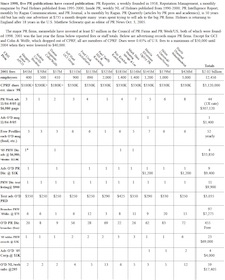
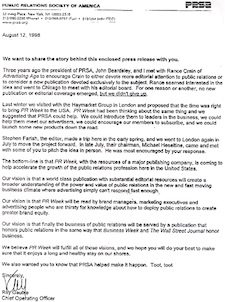

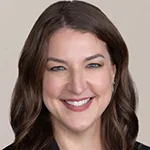 AB InBev has hired Donna Lorenson as chief communications officer and elevated the PR function to the senior leadership structure in the aftermath of the Bud Light marketing disaster.
AB InBev has hired Donna Lorenson as chief communications officer and elevated the PR function to the senior leadership structure in the aftermath of the Bud Light marketing disaster.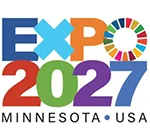 Tunheim handled the Minnesota USA World Expo bid committee, which on June 21 congratulated Serbia for landing the 2027 event.
Tunheim handled the Minnesota USA World Expo bid committee, which on June 21 congratulated Serbia for landing the 2027 event. United Minds, management consultancy, has launched Myriant, a business resiliency offering to help clients deal with the challenges during this era of misinformation, polarization and geopolitical upheaval.
United Minds, management consultancy, has launched Myriant, a business resiliency offering to help clients deal with the challenges during this era of misinformation, polarization and geopolitical upheaval. 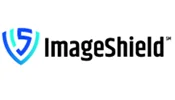 ImageShield, which guards against online image abuse, is looking for a communications pro to handle its PR and marketing campaigns.
ImageShield, which guards against online image abuse, is looking for a communications pro to handle its PR and marketing campaigns.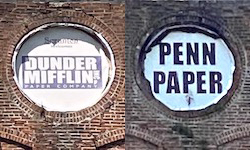 Who knew that there is a real paper company, Pennsylvania Paper & Supply, inside the iconic building seen at the opening of every episode of “The Office?”
Who knew that there is a real paper company, Pennsylvania Paper & Supply, inside the iconic building seen at the opening of every episode of “The Office?” 


 Have a comment? Send it to
Have a comment? Send it to 
No comments have been submitted for this story yet.